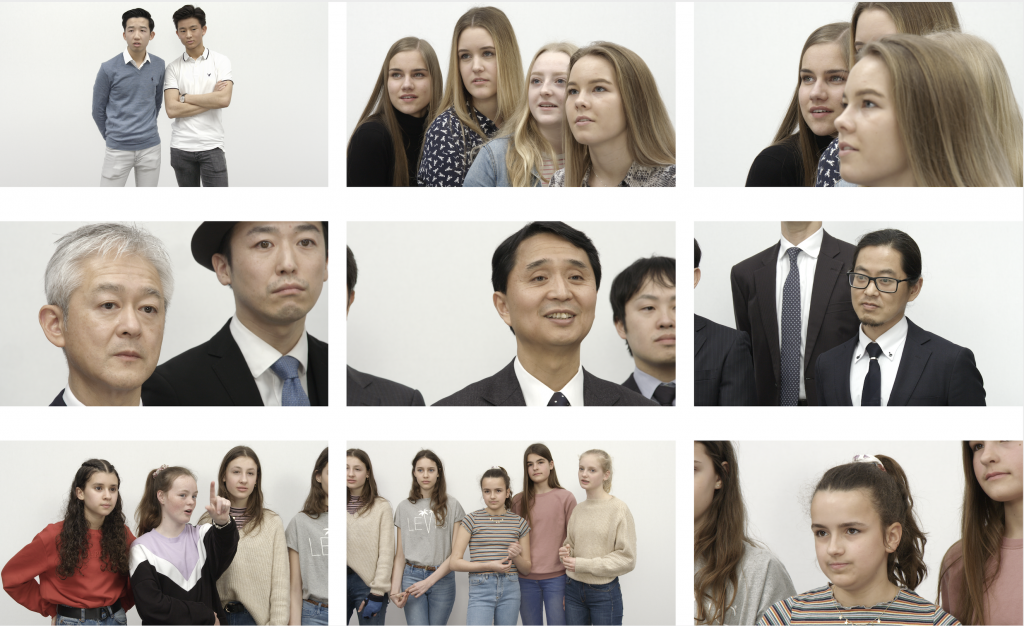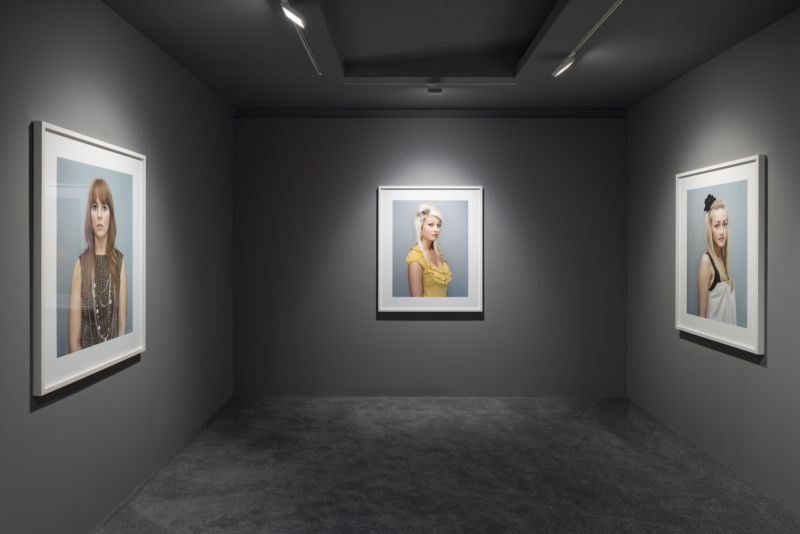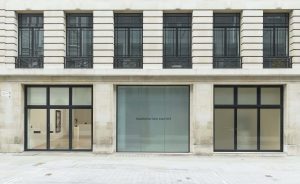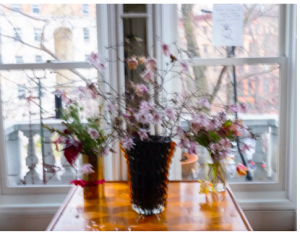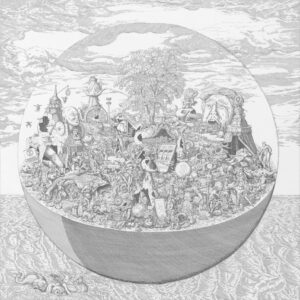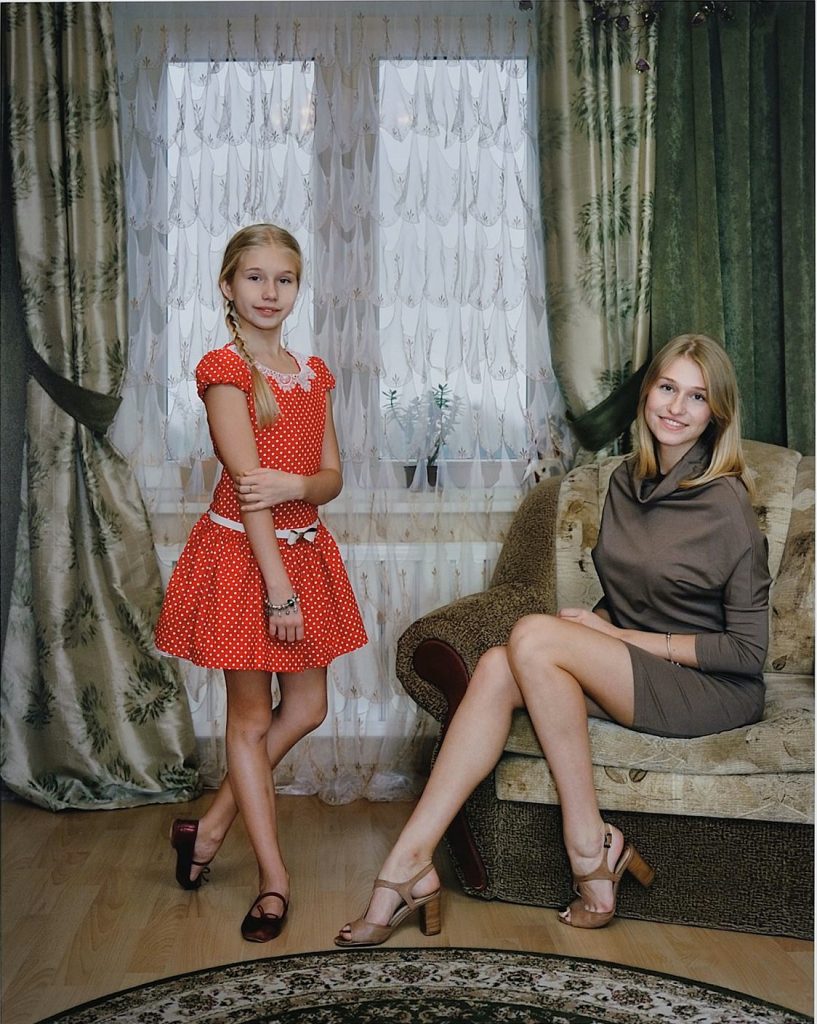
Marianna and Sasha, Kingisepp, Russia, November 2, 2014
Rineke’s first UK solo show in a decade opened last week at Marian Goodman Gallery. The exhibition hones in on the artist’s approach to portrait photography. The Dutch photographer presented a new series of family portraits exploring the awkward vulnerability and transience of adolescence.
Dijkstra’s photographic practice has spanned over three decades. She started out as a commercial photographer before developing her signature style of working on long term projects shooting portraits of children and teenagers. Working with a 4 x 5 camera which is difficult to focus, the artist often spends up to hours at a time photographing her subjects, adding to the strained and sometimes confrontational emotion present in the resulting photographs.
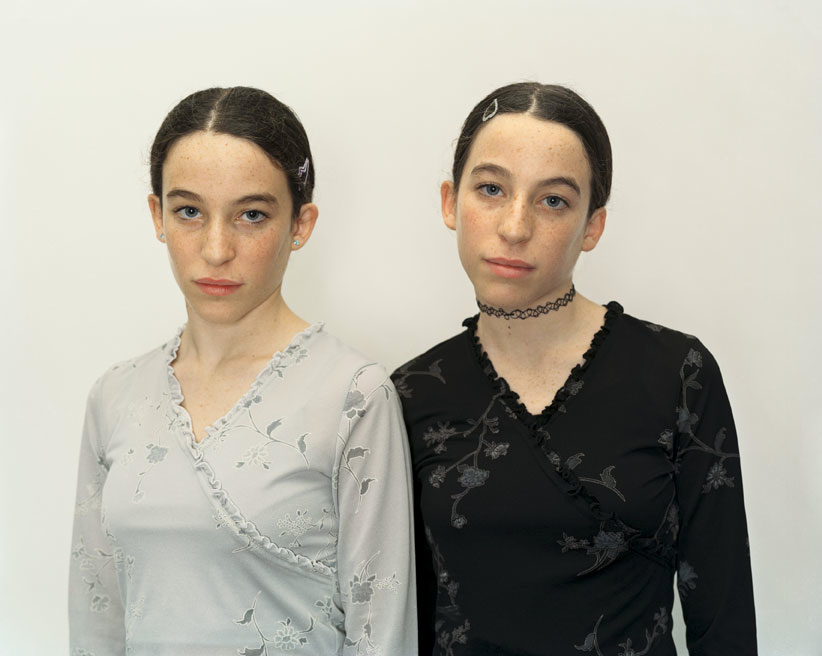
Chen and Efrat, Israel, 16 Dec. 2000
In the body of work exhibited at Marian Goodman, Dijkstra’s use of white and neutral backdrops creates an unsettling feeling of being stared at. Uniform series of photographs showing teens with blank expressions line the gallery walls, providing ample opportunity to conjure up various theories about their possible stories.
Her portrait series Emma, Lucy, Cecile, (Three Sisters) depicts three sisters who were photographed by Dijkstra once a year for seven years, the age gap between them determining the duration of the project. Walking around the upstairs gallery, the viewer’s gaze follows each sibling as they transform over time, going through adolescence and puberty at their own rate. Downstairs, a series of five photographs titled Chen and Efrat captures the transformation of a pair of Israeli twins over a period of six years.
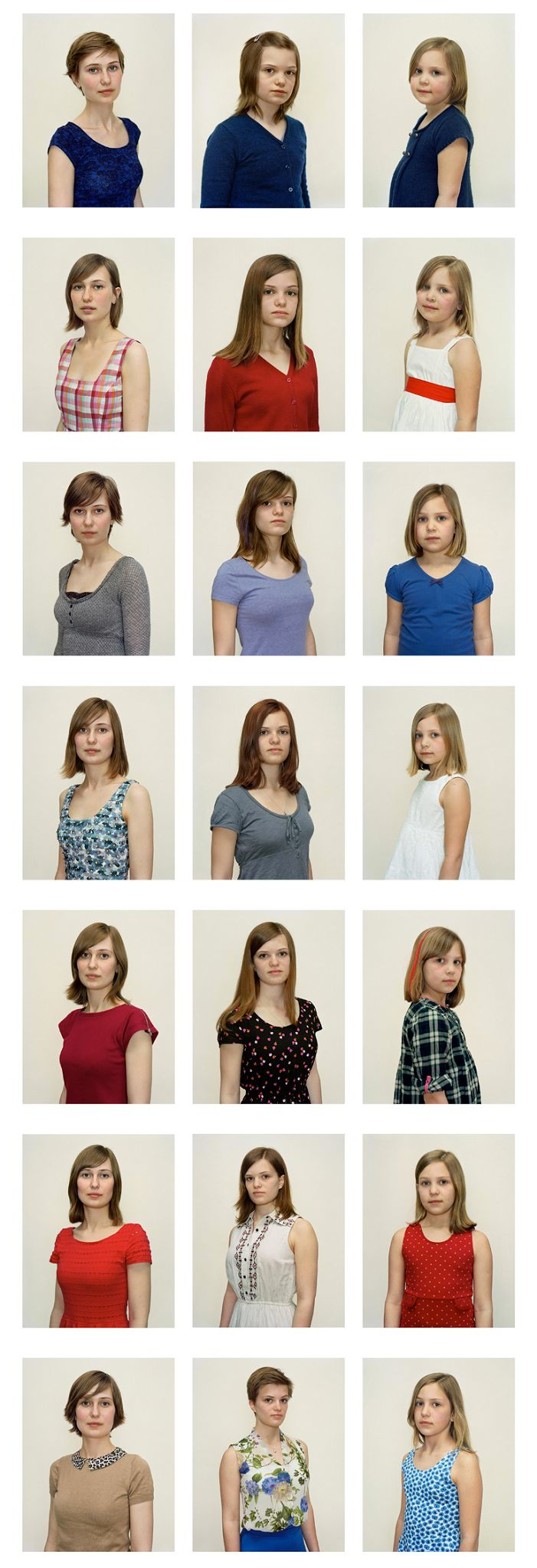
Emma, Lucy, Cecile (Three Sisters 2008-2014), 2016
The large format photographs call to mind historical paintings with their formality and stillness. Back in the 17th century, Dutch Old Master painters depicted the world with an attention to detail that pre-dated photography, to the extent that the classic photography studio lighting technique Rembrandt lighting was named after the painter. It therefore seems fitting that Dijkstra tackles photography through the lens of painting.
In a nod to the Dutch Golden Age of painting Dijkstra has created Night Watching, a new film installation commissioned by and first shown at the Rijksmuseum in Amsterdam last year, where the iconic Old Master painting by Rembrandt is currently undergoing restoration.
Presented as a triptych, three screens depict fourteen different social groups who were shot over six evenings while speaking at length about their takes on the painting. The groups range from school children to supermarket staff and Japanese businessmen. Dijkstra’s portrayal of these groups is interesting, as is the contrast between how carefully the compositions are arranged and how natural the subjects’ conversations are.
Dijkstra injects some humour by focusing on some of the weirder observations people make as well as more intimate moments, including a pair of teenagers subtly flirting with one another while they discuss Rembrandt’s painting technique and symbolism.
Dijkstra had first explored this format in her 2009 video installation titled I See a Woman Crying (Weeping Woman) which featured British schoolchildren observing and discussing Picasso’s painting The Weeping Woman (1937) at Tate Liverpool.
Rineke Dijkstra will be on view at Marian Goodman Gallery in London until 25 April 2020.
Images courtesy of Marian Goodman Gallery
